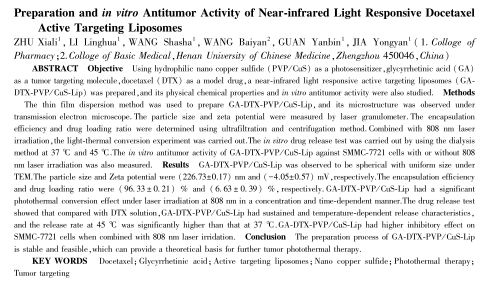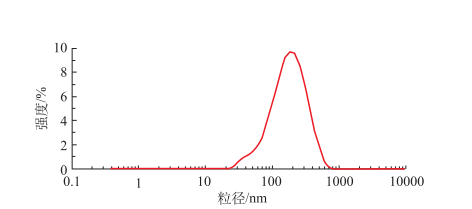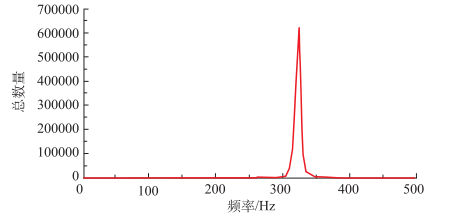苏州微流纳米生物技术有限公司
Liposomes(Lip) have targeting, good biocompatibility and biodegradability, and are considered to be the most promising nano-drug delivery system at present. Target compounds modified with glycyrrhetinic acid (GA) can specifically bind to glycyrrhetinic acid receptors on the cell membrane through cellular endocytosis and enter cells to exert pharmacological effects.
Tumor photothermal therapy (PTT) is currently a hot research topic in the field of cancer treatment. It is another new method of cancer treatment with great potential after surgery, radiotherapy (radiotherapy) and chemotherapy (chemotherapy) in clinical practice.
In this paper, hydrophilic nano-copper sulfide (PVP/CuS) was used as a photosensitizer, GA was used as a tumor targeting molecule, and docetaxel (DTX) was used as a model drug to prepare near-infrared light-responsive docetaxel active targeting liposomes (GA-DTX-PVP/CuS-Lip).

Figure 1 On the front page of the article,
accurately weigh phospholipids, cholesterol, stearyl carbenate (18-GA-Suc) and docetaxel (DTX) into a 250-ml eggan-shaped flask, add 10ml of chloroform to dissolve them all. Rotating and reduced pressure evaporation at 40 degrees Celsius to remove the organic solvent until a uniform film is formed. Then 5ml of PVP/CuS phosphate buffer solution (PBS) with pH 7.4 was added, ultrasonically (power 500W, frequency 40KHz), and then ultrasonically treated for 60 seconds (power 250W, frequency 25KHz) each time, with an interval of 3 seconds, to obtain near-infrared light-responsive docetaxel active targeting liposomes.

Figure 2 GA-DTX-PVP/CuS-Lip particle size distribution

Figure 3 GA-DTX-PVP/CuS-Lip potential distribution
experimental results show that the average particle size of GA-DTX-PVP/CuS-Lip is (226.7±0.17) nm, and the average Zeta potential is (-4.05 ± 0.57)mV.
To sum up, the GA-DTX-PVP/CuS-Lip process prepared in this experiment is stable and can provide a certain theoretical basis for further photothermal combined treatment of tumors!
Jin241012M